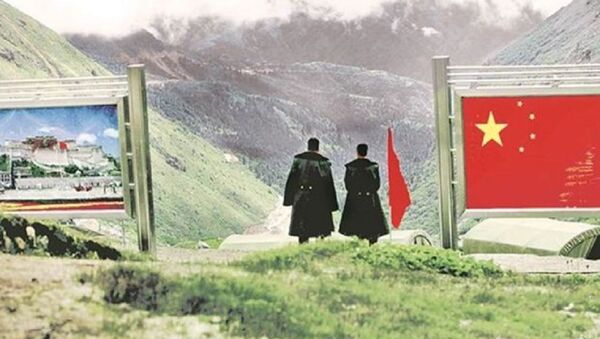Aiming to curb the country's dependence on China-manufactured power equipment, India's Power Ministry has envisaged stricter import norms for foreign-origin equipment, which include rigorous testing and prior permission requirements.
"Power is a sensitive and strategically important sector, as all our communications, manufacturing, data management and all essential services including defence manufacturing depends on power sector and any malware may bring down the system", India’s Minister of Power R.K. Singh said, while adding that "We want to build a firewall".
Sources told Sputnik that the minister categorically mentioned to power producers during deliberations earlier this week that the government is unlikely to allow importing equipment that is manufactured in China.
“The ministry has made it clear that permission will only be given to those if the required items to be delivered within two years”, one of those who attended the meeting told Sputnik.
The minister also mentioned that the country will tax imports of solar modules, solar cells, and solar inverters more from August this year. China supplies around 70 percent of the total requirement of solar modules and if the government implements higher duties, the cost of solar power may increase during a time when industries are suffering from an economic slowdown. India witnessed decade-low growth in gross domestic product (3.1%) in the first quarter of this year, while most agencies, including the International Monetary Fund, predict a contraction in the economy this year.
In addition, the government has also ensured cheaper finances if a power developer uses domestically manufactured equipment.
Data from India’s Ministry of Commerce points to a growing trend of importing electrical machinery from China over the last decade, except in 2017, when the Doklam stand-off erupted in June over road construction at the border tri-junction of Bhutan, India and China.
Imports currently address 40-45% of India's demand for capital goods, showing low self-reliance. The government has repeatedly asked power producers (as recently as 2018) to use local equipment as capacity utilisation is below 50% of domestic manufacturers.
It is worth noting that the Indian government and industries attempted a similar move to curb dependence on Chinese goods during the 2017 Doklam stand-off, and subsequent years when China blocked India's attempt to designate Jaish-e-Mohammed chief Masood Azhar as a global terrorist at the United Nations.
The recent irritants in the relationship over the killing of 20 soldiers on 15 June — the first combat in 45 years — also triggered a boycott China campaign. The ongoing tension in the Ladakh sector have failed to be defused, despite several rounds of military and diplomatic-level talks between the two Asian giants. The longstanding dispute over the 4,057-kilometre border, dating from the colonial era, led to a brief war in 1962.




